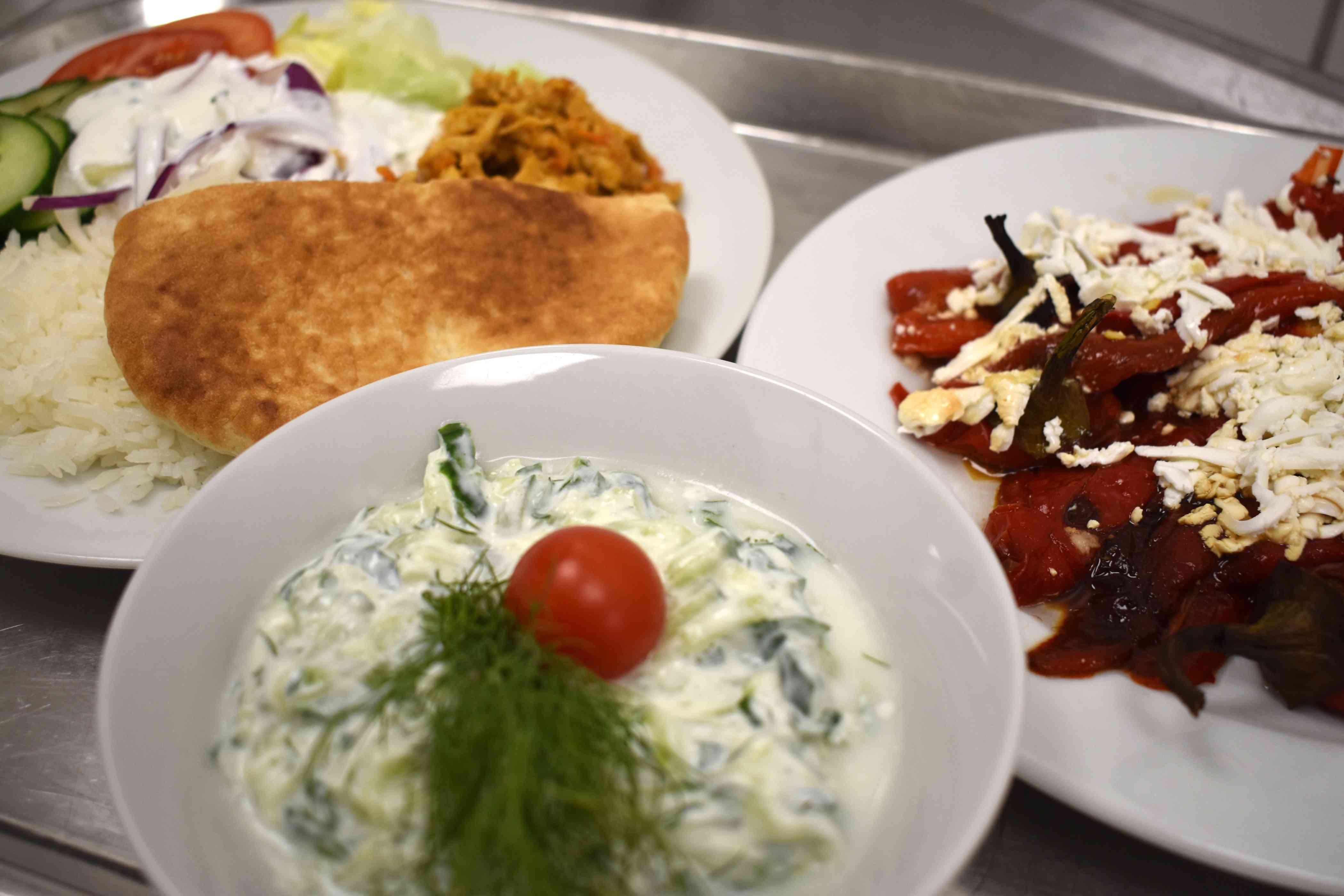We use cookies to improve your online experiences. To learn more and choose your cookies options, please refer to our cookie policy.

On Tuesday, to the great delight of our students, lunch was a gyros! We tried to make the whole lunchtime feel like Greece, like we were snacking on delicious food in a small Greek village. We made Greek bean soup, and of course, the salad bar had tzatziki, a Greek salad, and lots of fresh vegetables, a worthy accompaniment to deliciously tasty gyros. Of course, the sauces were to be noticed, with a traditional yoghurt dressing and mint sauce.
Gyros is a staple of Greek and Turkish nations, and it's hard to say where it was first made. Although they are called differently in both countries—gírosz in Greece and dönner kebab in Turkey—their names are similar. The name gyros come from the Greek γύροςgíros, meaning to turn. In Turkish, it is a translation of the Turkish word dönmek, which also means 'to rotate'. Kabāb means roast, the collective name for roast meat, so döner kebab means a rotating roast.
One of the fascinating aspects of gyros is its versatility. While it's typically made from lamb in Greece, it can also be prepared with beef, pork, chicken, or even fish, depending on the region. The seasonings, too, vary, with marjoram, oregano, rosemary, and thyme being the most common. This variety in ingredients and flavours makes gyros an exciting dish to explore.
Turkish döner kebabs are originally made with lamb, but there are also beef, chicken, and turkey versions. The classic döner also includes fresh vegetables and various sauces stuffed into yufka noodles with meat. However, the döner then becomes dürüm or twisted noodles.
In our school, we serve a chicken version to our students, and it is always a great success!
If you make the gyros with lean cuts of meat, use less oil to cook the meat and choose low-fat ingredients for the sauce, you will have a light summer meal. The pita itself can be made with wholemeal flour, which helps to make the dish more filling and keeps you feeling full for longer. But this effect is also helped by plenty of fresh vegetables, which provide vitamins and minerals beyond the feeling of fullness. They can also be the base of a light dinner, even if you eat them without a pita.